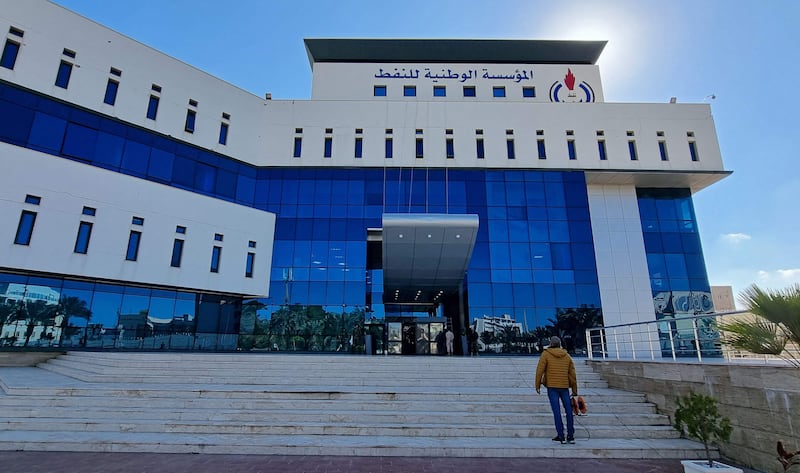Libya's National Oil Corporation said its crude output will reach 1.2 million barrels per day within two weeks after production resumed at several of its oilfields this week.
Current oil output at NOC is at 860,000 bpd, compared with 560,000 bpd on June 11, before resuming production, the state-owned company said. This is in line with the oil ministry's earlier declaration that output is at more than 800,000 bpd and is projected to hit the "normal" 1.2 million bpd rate by August.
The 1.2 million bpd figure was the average output in 2021, which was a significant recovery from 400,000 bpd in 2020, according to World Bank estimates.
"National Oil Corporation and its companies achieved a relative increase in oil production, with current production reaching 860,000 barrels per day, while the pre-reopening production rate was 560,000 barrels per day," the NOC said.
"NOC is striving to increase production and bring it back to its normal rates of 1.2 million barrels per day in two weeks."
Libya has Africa’s largest oil reserves and hydrocarbons, which account for 95 per cent of government revenues, making control of the industry a key point of contention between its rival governments.
Armed factions have also sought to control production and exports, in some cases attacking oil infrastructure, devastating Libya's economy.
Libya’s economic recovery, however, is gathering momentum, boosted by a large increase in hydrocarbon output in 2021, according to the African Development Bank.
The economy is expected to expand by 3.5 per cent this year and 4.4 per cent in 2023, but this will depend on the stabilisation of its political situation, security improvements and persistence of oil production, the lender added.
But rising prices, chronic power cuts and political deadlock have angered Libyans, who have taken to the capital Tripoli's streets to protest.
Libya on July 1 shut down two of the country's biggest export terminals and an oilfield amid political turmoil in the country, with NOC declaring a state of force majeure, which refers to an unforeseen set of circumstances preventing a party from fulfilling a contract.
The affected oil assets were Asidra and Ras Lanuf terminals, and the El-Feel field, which is also known as the Elephant field. Their closures resulted in billions of losses to its economy.
Before that, earlier shutdowns at two other terminals, Brega and Zueitina, brought total economic losses to about 16 billion Libyan dinars ($3.31bn), NOC said at the time. The Central Bank of Libya had put the figure at about $3.5bn.
The country's oil industry was thrown into further chaos last week when one of the country’s two rival governments dismissed NOC head Mustafa Sanalla, even sending troops to occupy the company's headquarters.
The armed units forced their way into NOC's Tripoli offices when Mr Sanalla refused to leave.
Farhat Bengdara, Mr Sanalla's replacement as NOC chairman, rejected challenges to his appointment on Tuesday as work at some shuttered fields and ports resumed.
This week, Mr Bengdara announced that oil production and exports resumed at all its blockaded oilfields and ports, after he met tribal leaders, who represent the groups involved in a months-long blockade, in the eastern city of Benghazi.
The lifting of the obstructions was estimated to restore about 850,000 bpd of Libyan oil output.







